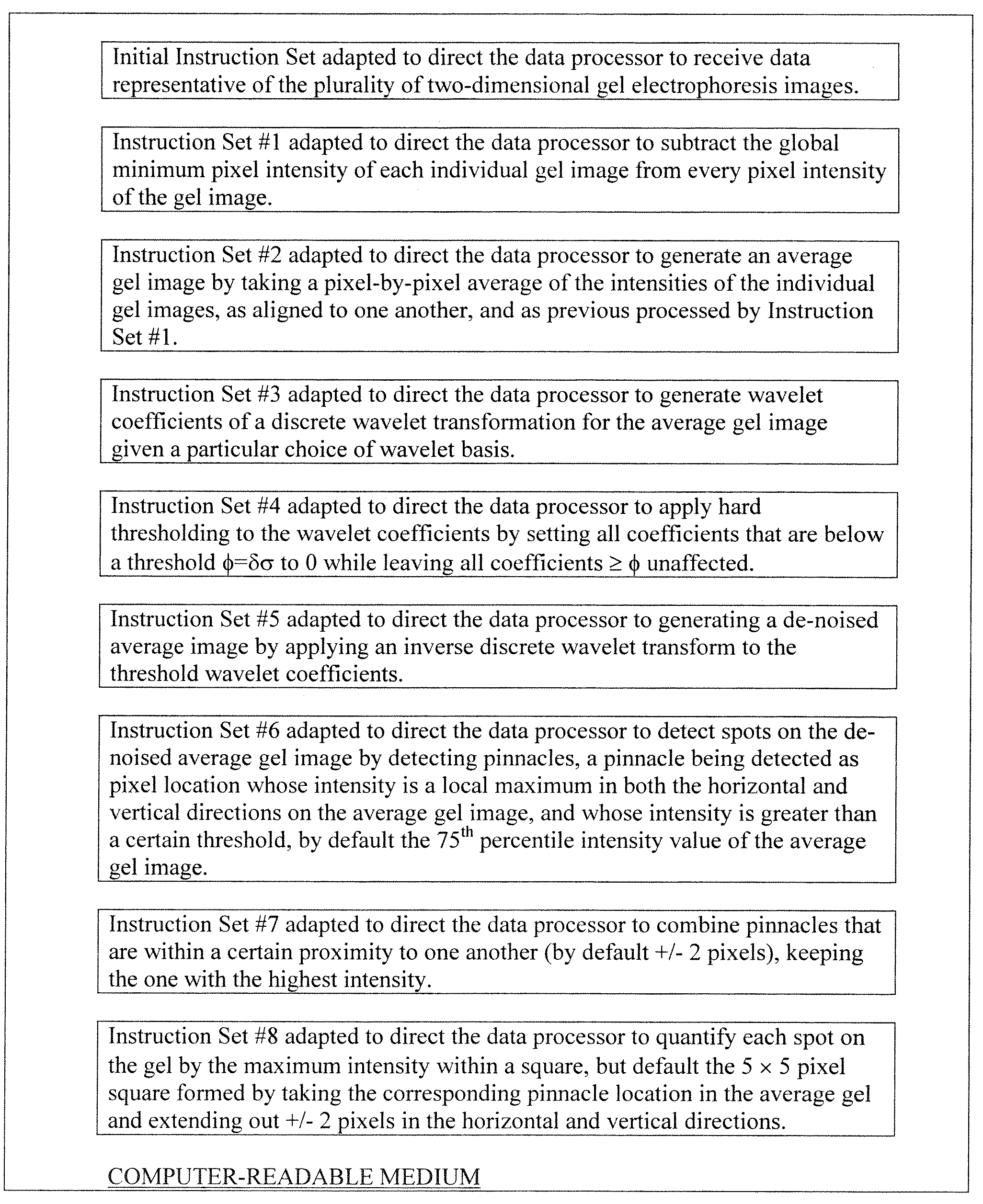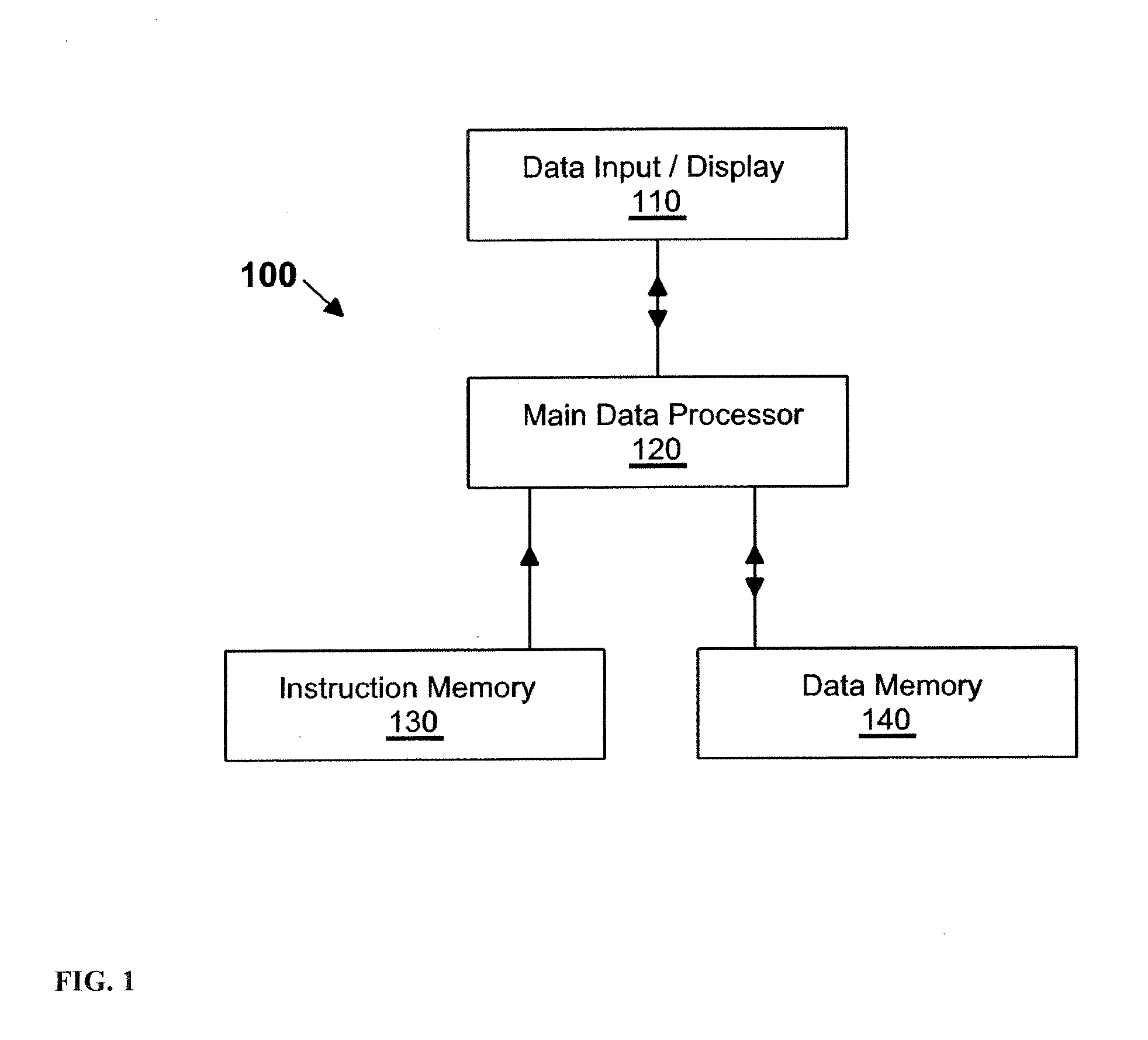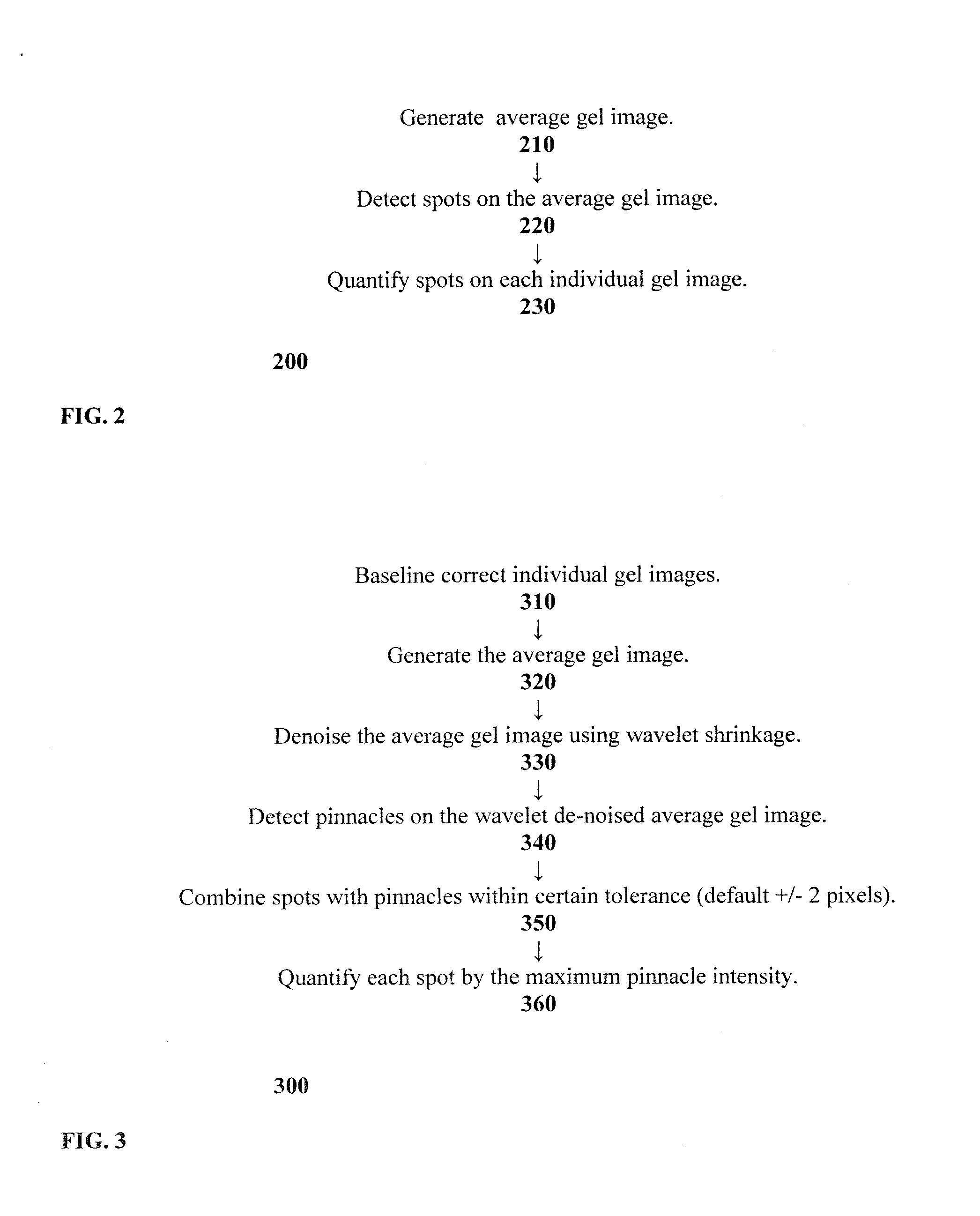Method and computer-program product for detecting and quantifying protein spots
a protein spot and computer program technology, applied in image enhancement, instruments, image data processing, etc., can solve the problems of inability to reliably detect protein spots, methods are not robust enough, and the complexity of analyzing proteomics data is greater than that of genomics data
- Summary
- Abstract
- Description
- Claims
- Application Information
AI Technical Summary
Benefits of technology
Problems solved by technology
Method used
Image
Examples
Embodiment Construction
[0020]In the following paragraphs, the present invention will be described in detail by way of example with reference to the attached drawings. Throughout this description, the preferred embodiment and examples shown should be considered as exemplars, rather than as limitations on the present invention. As used herein, the “present invention” refers to any one of the embodiments of the invention described herein, and any equivalents. Furthermore, reference to various feature(s) of the “present invention” throughout this document does not mean that all claimed embodiments or methods must include the referenced feature(s).
[0021]The present invention is directed to a method and a computer program product for detecting and quantifying protein spots. The invention was made with government support under RO1 DA015146 and P30 DA018310 awarded by The National Institutes of Health. The government has certain rights in the invention. It is more specifically directed to detecting and quantifyin...
PUM
 Login to View More
Login to View More Abstract
Description
Claims
Application Information
 Login to View More
Login to View More - R&D
- Intellectual Property
- Life Sciences
- Materials
- Tech Scout
- Unparalleled Data Quality
- Higher Quality Content
- 60% Fewer Hallucinations
Browse by: Latest US Patents, China's latest patents, Technical Efficacy Thesaurus, Application Domain, Technology Topic, Popular Technical Reports.
© 2025 PatSnap. All rights reserved.Legal|Privacy policy|Modern Slavery Act Transparency Statement|Sitemap|About US| Contact US: help@patsnap.com



